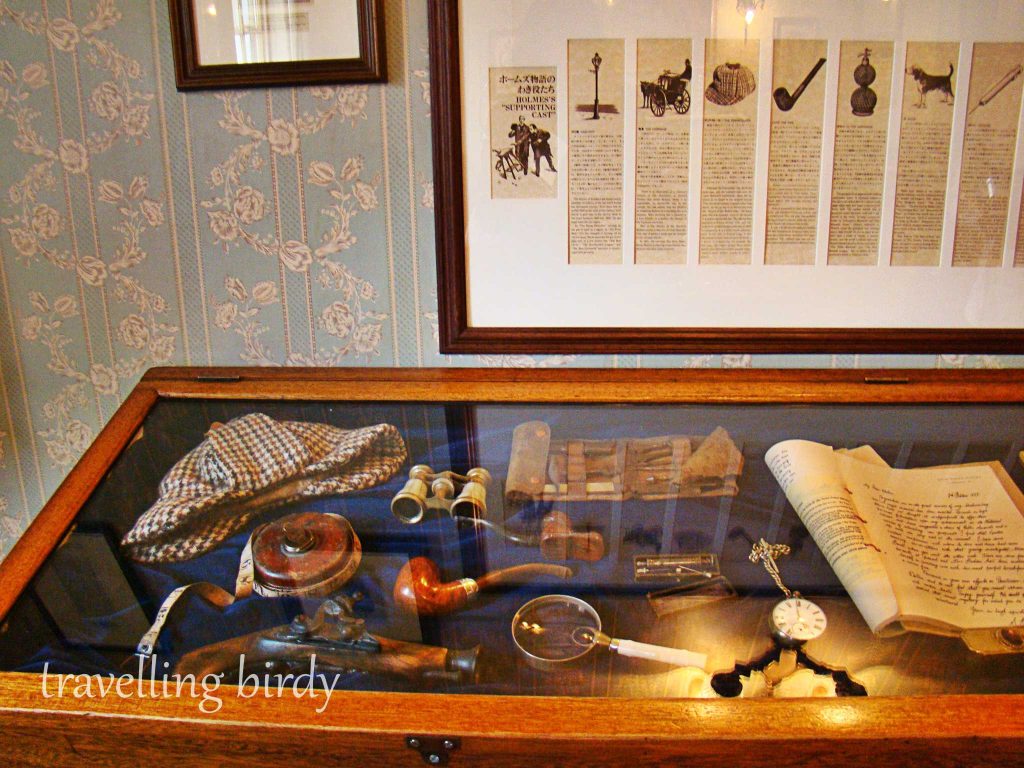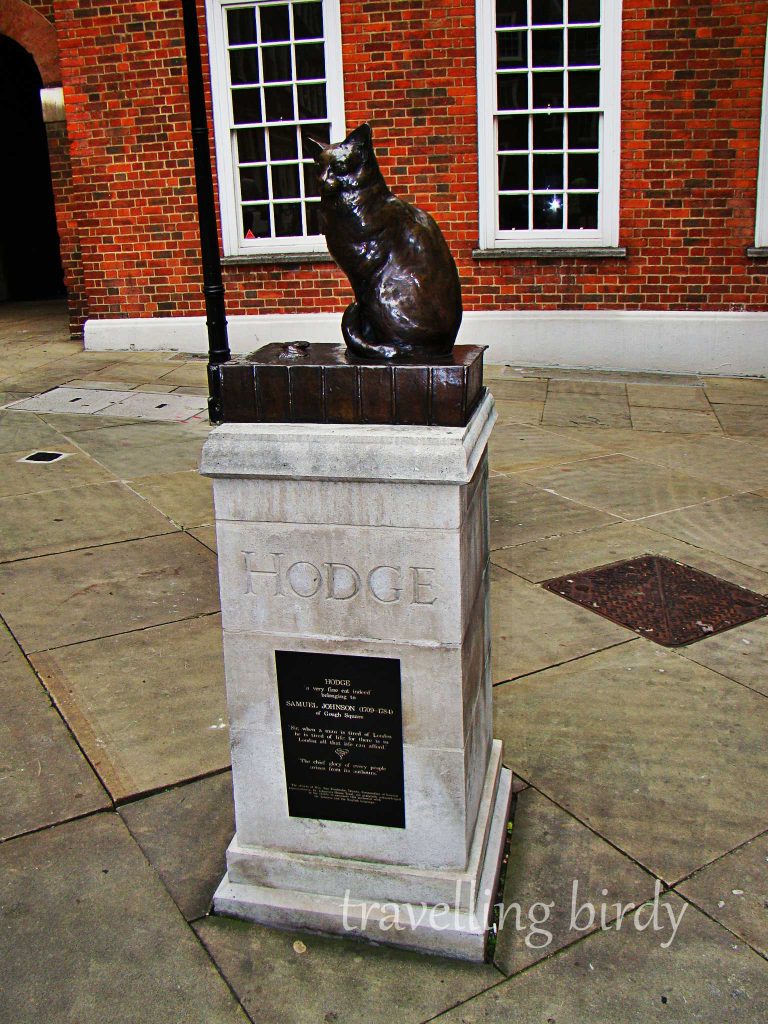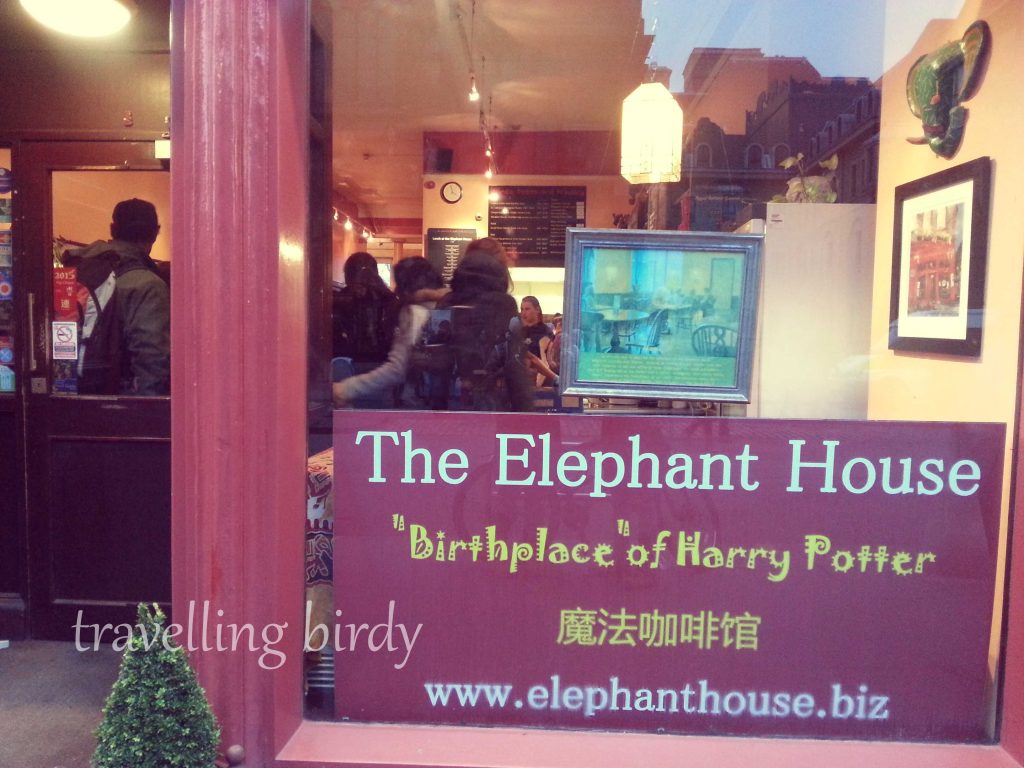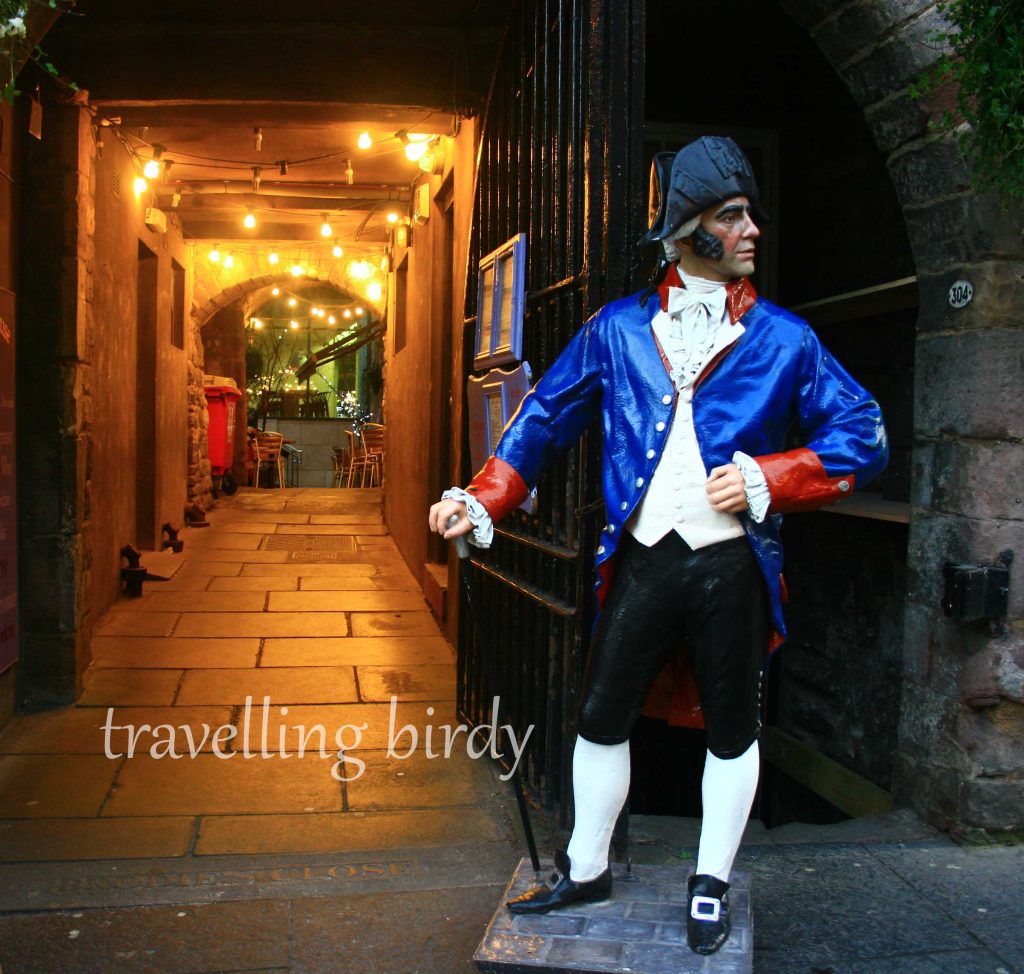Yesterday, I started this short online course named Literature and Mental Health from the University of Warwick featuring prominent figures like Sir Ian McKellan and Stephen Fry. One of the introductory questions that is addressed to the reader is, ‘why do you read?’ It set me thinking and led to this post. I have always believed that reading is the cheapest way to travel. I grew up reading everything from stories about Russian children to the lives of women in Victorian society and found that I was fascinated with stories of other worlds. Micro-worlds that existed within countries including my own. The world of women, of a certain community or professions etc. I read poetry and plays and made up my mind that English Literature would be my one and only choice to major in, in college. Literature changed me in many ways and once I began travelling I also sought out all things literary in the country I visited. Here are some of my significant encounters with literature during my travels over the years.
A Study in Sherlock: London
 London is a veritable feast for the senses. The city wooed me with its wealth of historical and literary stories. It was a bit like Rome – every corner and every stone had a story to tell. But my first tryst was with someone who created fictional history and this was the highlight of my trip. I was dizzy with anticipation as I stood in line to enter 221B, Baker Street, where the Sherlock Holmes Museum is located, in London. When I got in, I could almost hear the squeaky strains of a badly played violin piece. In the parlour, next to a crackling fire, stood a table bearing a pipe on awaiting its owner as he rushed out to find answers to another case. Letters, a microscope gathering dust, little wooden boxes and other carefully assembled minutiae stand testament to one of the greatest detectives who ever lived. Oh wait, he is fictional.
London is a veritable feast for the senses. The city wooed me with its wealth of historical and literary stories. It was a bit like Rome – every corner and every stone had a story to tell. But my first tryst was with someone who created fictional history and this was the highlight of my trip. I was dizzy with anticipation as I stood in line to enter 221B, Baker Street, where the Sherlock Holmes Museum is located, in London. When I got in, I could almost hear the squeaky strains of a badly played violin piece. In the parlour, next to a crackling fire, stood a table bearing a pipe on awaiting its owner as he rushed out to find answers to another case. Letters, a microscope gathering dust, little wooden boxes and other carefully assembled minutiae stand testament to one of the greatest detectives who ever lived. Oh wait, he is fictional.
Shakespeare, Chaucer, Milton, Jane Austen: London
 At the British Library, I stood slack-jawed as I walked past carefully preserved manuscripts of the people who fascinated me in my childhood and fuelled furious debates when I was in college. Shakespeare, Chaucer, Milton, Jane Austen and many others who lived centuries apart now came together through their works in the library. Stripped of editorial spit and polish, the manuscripts showed them as vulnerable writers, prone to mistakes and afterthoughts evidenced by the numerous scribblings curling along the margins and vigorously slashed out words.
At the British Library, I stood slack-jawed as I walked past carefully preserved manuscripts of the people who fascinated me in my childhood and fuelled furious debates when I was in college. Shakespeare, Chaucer, Milton, Jane Austen and many others who lived centuries apart now came together through their works in the library. Stripped of editorial spit and polish, the manuscripts showed them as vulnerable writers, prone to mistakes and afterthoughts evidenced by the numerous scribblings curling along the margins and vigorously slashed out words.
John Keats, A Bright Star: London
I remembered some of my fellow Literature classmates going moony over John Keats’ romantic verses as I stood reading his manuscripts on display at the Keats House. I was never very enamored by his poetry as much as I was with his life. A shy youngster who died at the very unfair age of 25, Keats had a fairly tumultuous life having to battle criticism from fellow poets for his “badly-written” poems and shouldering the entire responsibility of fending for his brothers and sister. Walking around his house in Hampstead Heath, I felt a sense of melancholia as I imagined the young poet gazing out of the window as thoughts ravaged his mind.
Samuel Johnson and Hodge: London
 I stepped into the courtyard of Dr. Samuel Johnson’s House, quite by accident, and I was amused to discover a statue of Hodge, a cat. He was the most popular of all of Johnson’s cats and is remembered as a ‘very fine cat indeed.’ Although I am not very familiar with Johnson’s works or his life, except for the fact that he was a renowned lexicographer, I liked the serendipitous moment of discovering this little courtyard with Hodge’s statue, tucked away from the noises of the city outside.
I stepped into the courtyard of Dr. Samuel Johnson’s House, quite by accident, and I was amused to discover a statue of Hodge, a cat. He was the most popular of all of Johnson’s cats and is remembered as a ‘very fine cat indeed.’ Although I am not very familiar with Johnson’s works or his life, except for the fact that he was a renowned lexicographer, I liked the serendipitous moment of discovering this little courtyard with Hodge’s statue, tucked away from the noises of the city outside.
Monica Ali’s Brick Lane: London
I remember reading Monica Ali’s book “Brick Lane” and thinking that this does not live up to all the rave reviews it had generated. When I actually stood at the beginning of the real Brick Lane in London I couldn’t help but think about Nazneen’s experiences as a Bangladeshi immigrant in the book. The street was filled with Bangladeshi restaurants and shops. I had to try the famous balti (the vegetarian version, of course) and I had to pop into their stores to see wares from their native land. It was quite an immersive experience with a melange of language, food, and people from Bangladesh all around me and it was then that I realized how odd Nazneen must have felt when she first came to a new land. And the importance of Monica Ali’s Brick Lane.
Dickens,The Grapes of History: London
It was biting cold, dark, and I had to navigate the way using my GPS. One of my friends had agreed to meet me for a quick drink at a non-descript pub in a non-descript area in London. I shivered and staggered into the pub and was met with very Irish-looking interiors where a crush of people was sitting around the tiny lounge. There was more seating at the back, and a single bartender running around busily serving the constant flow of patrons. It was the lone pub along what looked like a street filled with old buildings along a canal and I was puzzled about the apparent popularity of the place. Later, as I was leaving, I saw a board outside outlining the pub’s history. I had been sitting in the very pub that Charles Dickens used to frequent, even finding a mention in Our Mutual Friend, and from where Sir Walter Raleigh set sail. Named invitingly as The Grapes, the pub is situated in The Limehouse, an area known for finding many mentions in works by authors from Oscar Wilde to Peter Ackroyd. Who would have thunk. I was drunk on delight.
Walter Scott: Edinburgh
Scotland, though more popular for its spectacular landscapes, has no dearth of literary stories to tell. Edinburgh received its UNESCO City of Literature tag way before (2004) Dublin (2010) and it certainly lives up to it. Where else will you find an entire monument, the largest in the world, dedicated to a writer? The imposing Victorian Gothic structure encasing a statue of Sir Walter Scott sits right next to the Waverley train station, eponymously named after one of his most famous works.
JK Rowling: Edinburgh
 Wandering by Waverley, I passed by this enormously packed cafe named The Elephant House, and discovered that this was the former haunt of J K Rowling. Yes, yes, Harry Potter fans, I am suitably ashamed that I didn’t know about this. Rowling is supposed to have begun writing Harry Potter in “the back room overlooking Edinburgh Castle,” a fact that completely overshadows their admirable collection of over 600 elephants. Maybe, the staff has no time to maintain that collection as they are too busy cleaning up the graffiti left by fans in the cafe.
Wandering by Waverley, I passed by this enormously packed cafe named The Elephant House, and discovered that this was the former haunt of J K Rowling. Yes, yes, Harry Potter fans, I am suitably ashamed that I didn’t know about this. Rowling is supposed to have begun writing Harry Potter in “the back room overlooking Edinburgh Castle,” a fact that completely overshadows their admirable collection of over 600 elephants. Maybe, the staff has no time to maintain that collection as they are too busy cleaning up the graffiti left by fans in the cafe.
RL Stevenson, Hyde-ing in the Night: Edinburgh

The Deacon House Cafe is where William Brodie lived and died, a respectable cabinetmaker by day and a despicable thief by night. What’s remarkable? He inspired R L Stevenson to write his book Dr Jekyll and Mr Hyde. I wasn’t aware of this little fact until Mr Brodie’s smartly kitted out statue along the Royal Mile caught my attention.
Hemingway, Exploring in Ernest: Chicago
It was a bright, crisp day in Chicago when I stood in front of the Hemingway House, a large two storied house with a porch and a small front yard. Inside, I saw that it had been restored remarkably well to reflect Hemingway’s era in a lot of ways. It had well-maintained rooms of which I particularly liked the kitchen. The crockery was especially striking in its elegance and later I learnt that Hemingway’s grandfather Ernest Hall had owned a successful cutlery business. It felt amazing to be standing in the very home that this great writer was born and lived in for a very long time.
Dufu: Chengdu
 Du Fu’s (a Chinese poet) Thatched Cottage in Chengdu, China is situated in a landscaped park in a suburban part of the city. Du Fu is one of China’s greatest poets and I enjoyed walking around the beautifully maintained park. But what I remember more than anything is the wonderful time I had there with my Chinese teacher and my best friend. We practiced Chinese, learnt some history, took silly photos, posed with the V sign the Chinese way and generally created memories that are imprinted in my mind to this day.
Du Fu’s (a Chinese poet) Thatched Cottage in Chengdu, China is situated in a landscaped park in a suburban part of the city. Du Fu is one of China’s greatest poets and I enjoyed walking around the beautifully maintained park. But what I remember more than anything is the wonderful time I had there with my Chinese teacher and my best friend. We practiced Chinese, learnt some history, took silly photos, posed with the V sign the Chinese way and generally created memories that are imprinted in my mind to this day.
Remembering Words and Lives: Dublin
Last on my list is the Writer’s Museum in Dublin with its historical tidbits on writers and poets. The museum is situated in a 17th century period house, which was later owned by the Jameson family. Whisky fans will be quite familiar with this name. The rooms were all quiet like a library and I was alone with my thoughts to read the stories that the authors’ lives themselves were. I learnt that W B Yeats was once also a senator in Ireland and helped design the country’s coins, that James Joyce got shot at by Oliver St John Gogarty, another writer and that Samuel Beckett was such a fiercely private person that he had a specially designed rotary phone (on display) which had a button to block incoming calls.
Why do we read? I read because I enjoy travelling through pages, imagining the words come alive, having a movie play in my head with all the characters am reading about. Having a book is having a companion for life and not knowing the meaning of boredom. I end this post with The Walking Song by Bilbo Baggins (J R R Tolkien) that sums up my thoughts about travelling as well as reading. Because I don’t know where I will travel next or what I will read next. And that’s exciting.
The Road goes ever on and on,
Down from the door where it began.
Now far ahead the Road has gone,
And I must follow, if I can,
Pursuing it with eager feet,
Until it joins some larger way
Where many paths and errands meet.
And whither then? I cannot say



